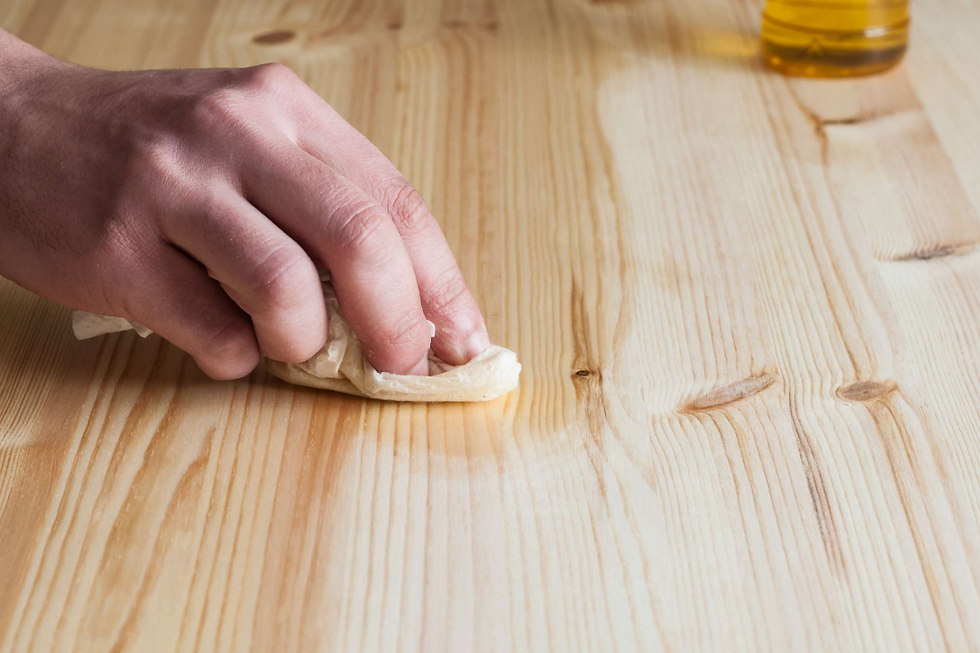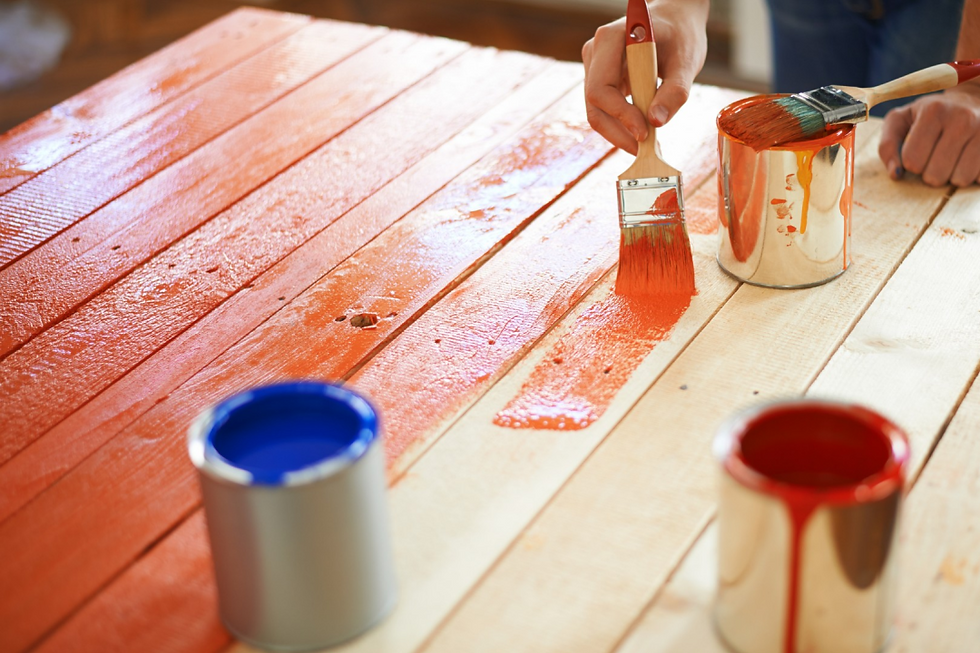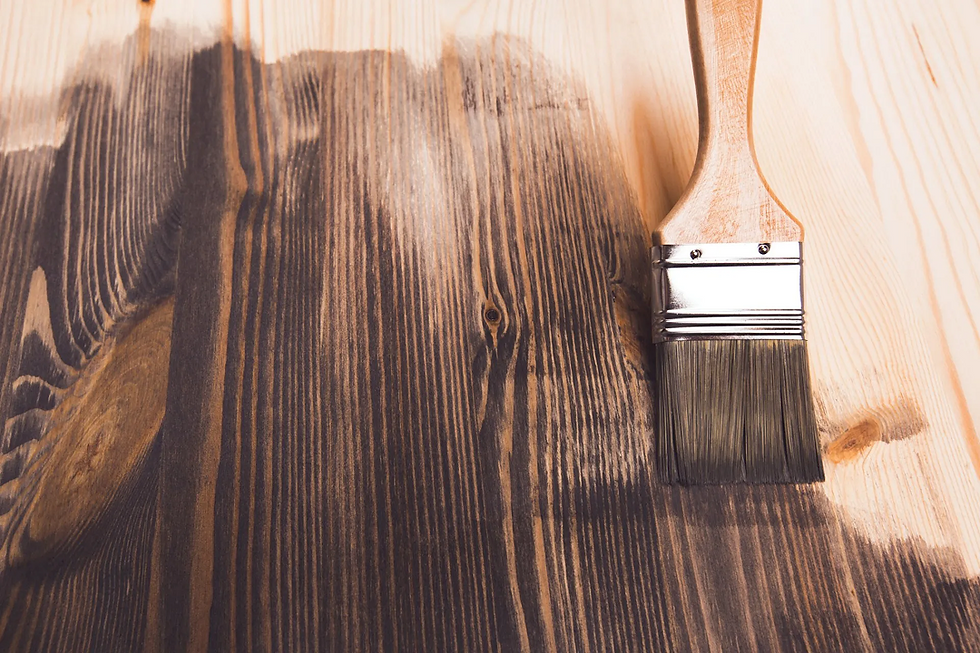The Evolution of Wood Stain: 5 Key Eras That Changed How Humans Protect Wood
- Jul 19
- 3 min read

Wood has been a long-used material by humans in construction, furniture, art, and everyday objects. However, because wood has limitations in terms of durability, wood stains and coatings were invented to help protect wood, keeping it beautiful and extending its lifespan. In this article, we'll take you back in time to look at the development of wood stains and coatings, from prehistoric times to the latest technologies.

Prehistoric - Ancient Era
Ancient humans began using natural raw materials to preserve wood for longer periods, such as:
Natural oils: such as linseed oil, sesame oil, and soybean oil.
Beeswax and Resin: These substances helped protect wood from water, moisture, and insects, and slowed down the deterioration of the wood.
For decorative colors in the early days, natural pigments were often used, such as colored earth, ground charcoal, or powdered minerals, mixed with oil to adhere to the wood, providing beautiful colors while still showing the wood grain.

The Industrial Revolution (18th-19th Centuries)
As chemical knowledge began to develop, humans were able to invent more complex wood coatings, such as:
Lacquer: from the sap of the Urushi tree (Toxicodendron vernicifluum).
Shellac: extracted from the lac insect.
Varnish: created by mixing oil with resin.
During this period, synthetic dyes like Aniline dyes were also discovered. These small-molecule dyes were highly soluble in water or alcohol, providing bright colors that penetrated deep into the wood and showed the grain more clearly than traditional pigments. However, due to their lack of resistance to sunlight (UV), these dyes required an additional topcoat to prevent fading and to provide water resistance.
Towards the end of this era, oil-based paints were invented, using linseed oil as the main solvent, which helped to make the paint film more resistant to environmental conditions.

Early 20th Century (1990-1950)
This was the era when oil-based wood stains and paints became widely popular. Oil-based wood stain formulas were developed using a mixture of linseed oil, soybean oil, and coconut oil, along with resins and fungicides, which improved their ability to protect against water, stains, mold, and moisture.
This period also saw the invention of a key material: polyurethane. Although it was not initially used directly in woodworking, it was used in the adhesive, foam, and industrial paint industries.

Mid-20th Century (1950-1970)
After World War II, the development of more durable wood coatings began. Scientists started using oil-based polyurethane for woodworking applications such as wood floors, furniture, and interior decoration because of its superior resistance to scratches, water, heat, and chemicals compared to previous coatings.
The synthetic chemistry industry also developed both solvent-based and water-based paint formulas that were low-odor, safer, and reduced VOCs (volatile organic compounds, which are pollutants), and included UV inhibitors to slow down color fading.
In the construction and furniture industries, clear wood finishes became popular to showcase the natural beauty of the wood grain.

The Modern Era (1970 - Present)
Wood coating technology has taken a leap forward, with a greater emphasis on safety and environmental friendliness.
Water-based polyurethane formulas were developed to reduce VOC emissions and be safer for users.
Acrylic water-based wood stains and paints were developed, which are fast-drying, non-toxic, and have built-in UV, mold, termite, and moisture protection.
New formulas were invented, such as:
Hybrid coatings: combining the advantages of water-based and oil-based formulas.
Nano coatings: thin films with high strength and durability.
Self-healing coatings: surface coatings that can repair minor scratches on their own.



